When a high school student-athlete commits to play college sports, it represents years of dedication, sacrifice, and achievement. These moments deserve recognition that extends far beyond a single ceremony or social media post. Colleges receive commitments, families celebrate milestones, and schools should honor these accomplishments in ways that inspire future generations of athletes.
College commitment recognition serves multiple purposes: it celebrates individual student-athletes, demonstrates program quality to prospective recruits and families, builds school pride, and creates lasting connections between current students and successful alumni. Yet many schools struggle to provide recognition that does justice to these significant achievements.
Why College Commitment Recognition Matters
Only a small percentage of high school athletes advance to compete at the collegiate level. These commitments represent exceptional dedication, talent, and achievement. When schools celebrate college commitments effectively, they inspire younger athletes, strengthen program reputations, engage families and communities, and preserve institutional success stories for years to come.
This comprehensive guide explores how to create meaningful college commitment recognition programs, from planning National Signing Day ceremonies to implementing digital displays that provide lasting celebration and inspiration.
Understanding the Significance of College Commitments
Before designing recognition programs, it’s helpful to understand what college athletic commitments represent and why they matter so deeply to students, families, and school communities.
The Journey to College Athletics
The path to college athletic commitment is lengthy and demanding. Student-athletes typically begin focused training in middle school, balance rigorous practice schedules with academic responsibilities, develop skills through camps and specialized coaching, compete at high levels throughout high school, navigate complex recruiting processes, and maintain grades that meet NCAA eligibility requirements.
This journey requires extraordinary time management, personal sacrifice, family support, and resilience through setbacks and injuries. A college commitment represents the successful completion of this demanding pathway.
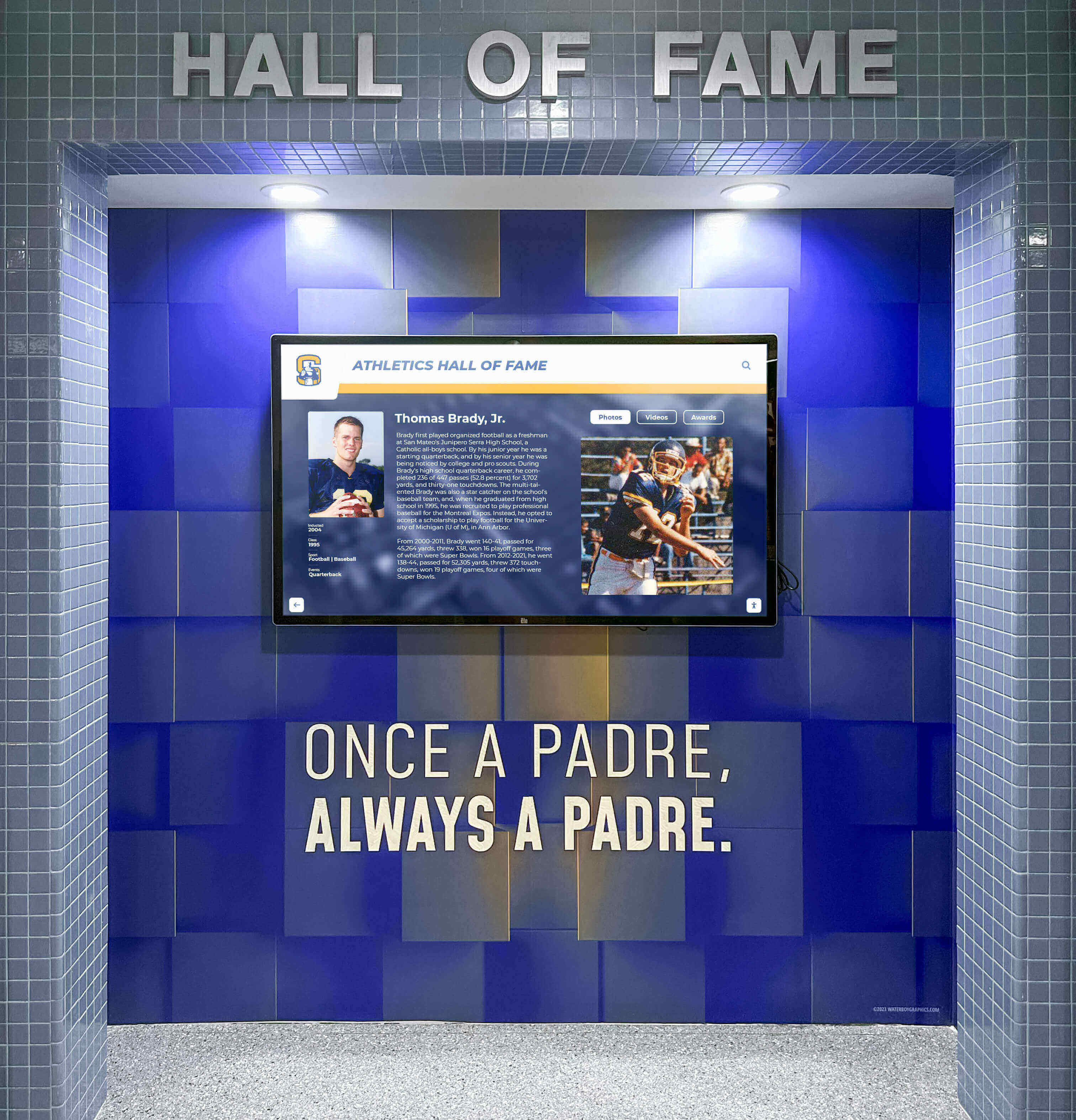
What Makes These Achievements Exceptional
College athletic opportunities are remarkably selective. Depending on the sport and division level, only 2-7% of high school athletes continue competing in college. This selectivity makes commitments genuinely exceptional achievements worthy of substantial recognition.
Student-athletes who earn college opportunities typically demonstrate high-level athletic performance in their sport, consistent academic achievement meeting eligibility standards, leadership qualities that coaches value, character and work ethic that fit program cultures, and potential for continued development at the college level.
The Impact on School Communities
College commitments benefit entire school communities, not just individual athletes. These achievements validate coaching quality and program development, attract prospective families evaluating schools and athletic programs, build school pride and positive community identity, strengthen connections between schools and college programs, and inspire younger athletes to pursue similar goals.
Recognition programs that effectively celebrate commitments amplify these positive impacts throughout school communities.

Traditional College Commitment Recognition Methods
Most schools employ familiar recognition approaches for college commitments. Understanding current practices helps identify opportunities for enhancement and innovation.
National Signing Day Ceremonies
Many schools host formal ceremonies during National Signing Day periods when athletes officially sign National Letters of Intent. These events typically include public announcements of athlete commitments, opportunities for students to sign letters surrounded by family and teammates, brief speeches from athletes, parents, or coaches, photo opportunities with signed letters and college apparel, and refreshments or receptions celebrating the athletes.
While meaningful, these ceremonies have limitations. They occur only on specific dates, may not accommodate all families’ schedules, and provide recognition that’s temporary and limited to those who can attend in person.

Social Media Announcements
Schools routinely share college commitments through social media platforms including announcement posts with athlete photos and college logos, video interviews with committed athletes, compilation posts celebrating multiple commitments, and congratulatory messages from coaches and teammates.
These announcements reach wide audiences quickly but lack permanence. Posts disappear from feeds within hours, become difficult to find in historical timelines, and provide limited information beyond basic announcement details.
Trophy Case and Bulletin Board Displays
Traditional physical displays might include printed photos of athletes in college apparel, lists of commitments organized by sport or date, newspaper clippings about notable commitments, and signing ceremony photos with families and coaches.
Physical displays offer visibility to campus visitors but face significant constraints. Space limitations force difficult choices about what to display, updates require manual effort and physical materials, information stays limited to what fits in available space, and displays deteriorate over time requiring maintenance or replacement.
The Digital Revolution in College Commitment Recognition
Digital recognition platforms transform how schools celebrate college commitments, addressing limitations of traditional approaches while introducing powerful new capabilities.
Why Digital Displays Excel for College Commitment Recognition
Modern digital recognition systems provide advantages that traditional methods simply cannot match:
Permanent, Searchable Recognition: Every commitment becomes part of a permanent, searchable database. Students, parents, alumni, and visitors can explore complete commitment history spanning years or decades. Unlike social media posts that vanish or paper displays that deteriorate, digital recognition endures indefinitely.
Rich Multimedia Storytelling: Digital platforms support comprehensive profiles including high-quality signing ceremony photos, video highlights and interviews, detailed athletic statistics and achievements, information about college programs, ongoing updates about collegiate careers, and connections to teammates and related athletes.
This depth creates engaging experiences that honor achievements more fully than simple name listings ever could. Schools can explore how digital displays showcase college commitments with rich multimedia content that traditional methods cannot match.

Unlimited Capacity: Digital systems eliminate space constraints entirely. Schools can recognize every college commitment across all sports, divisions, and years without choosing which athletes receive visibility. JV athletes who walk on, D-III commits, junior college signings—all receive equal recognition.
Easy Updates and Maintenance: Adding new commitments takes minutes through simple web-based management systems. No printing, no physical installation, no waiting for materials. Athletic directors can update displays from any location using any device, ensuring timely recognition throughout recruiting seasons.
Extended Accessibility: Many digital recognition platforms include web-based access, allowing content to reach audiences far beyond physical campus locations. Prospective families research programs remotely, alumni explore current commitments from anywhere, college coaches review program quality when considering recruits, and community members engage with athletic success stories.
Solutions like those provided by Rocket Alumni Solutions specifically address the unique needs of schools celebrating athletic commitments with purpose-built features and intuitive management.

Creating Comprehensive Commitment Profiles
The most effective digital commitment recognition includes detailed profile information that tells complete stories. Schools implementing comprehensive athlete recognition programs understand the importance of rich, engaging content.
Essential Profile Elements:
- Full athlete name, graduation year, and sport
- College or university name with proper branding
- Division level and conference affiliation
- Signing date and commitment timing
- High school career highlights and statistics
- Athletic achievements, awards, and honors
- Academic accomplishments and intended major
- Personal quotes about college choice and journey
- Signing day ceremony photos
- Action photos from high school career
- Video highlights when available
This comprehensive approach creates profiles that engage viewers emotionally, provide meaningful context beyond basic facts, inspire younger athletes by showing complete journeys, and honor students by celebrating their full high school experiences.
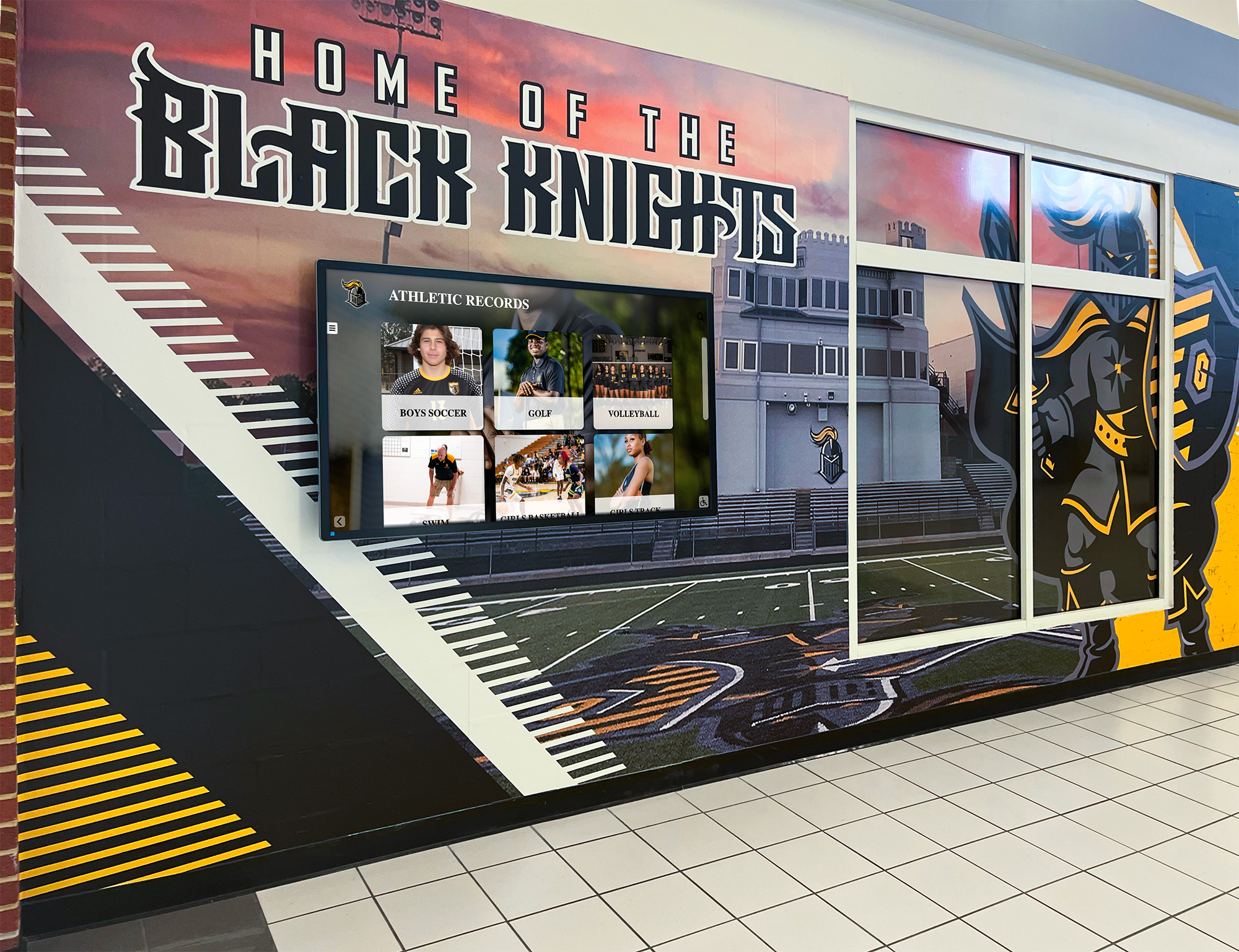
Planning Memorable National Signing Day Ceremonies
While digital displays provide lasting recognition, National Signing Day ceremonies create memorable celebration moments that families cherish. Thoughtful planning maximizes the impact of these special events.
Ceremony Timing and Scheduling
National Signing Day occurs on different dates depending on the sport. Football has multiple signing periods with Early Signing Day in December and National Signing Day in February. Most other sports follow spring signing periods, typically in April or May. Some sports and situations allow signing outside these traditional windows.
Schools should coordinate ceremony timing that accommodates participating athletes, fits school calendars without conflicting with major events, allows adequate planning time for quality execution, and provides flexibility for families with scheduling constraints.
Some schools host multiple smaller ceremonies throughout the year as athletes commit, while others organize single comprehensive events celebrating all spring sport commitments together. Both approaches work well when executed thoughtfully.
Creating Meaningful Ceremony Experiences
Effective signing ceremonies balance formality with warmth and personal touches:
Ceremony Elements That Resonate:
- Welcome and context-setting from athletic directors
- Individual introductions of each athlete with biography highlights
- Opportunity for athletes to speak about their journey and decision
- Parent or coach testimonials (when appropriate and desired)
- Actual signing moments with photo opportunities
- Presentation of commitment certificates or commemorative items
- Group photos of all athletes being celebrated
- Reception time for families to celebrate together
The most memorable ceremonies focus on honoring individual athletes while creating collective celebration. They provide structure without feeling overly rigid, and they acknowledge the family and community support that enabled success.
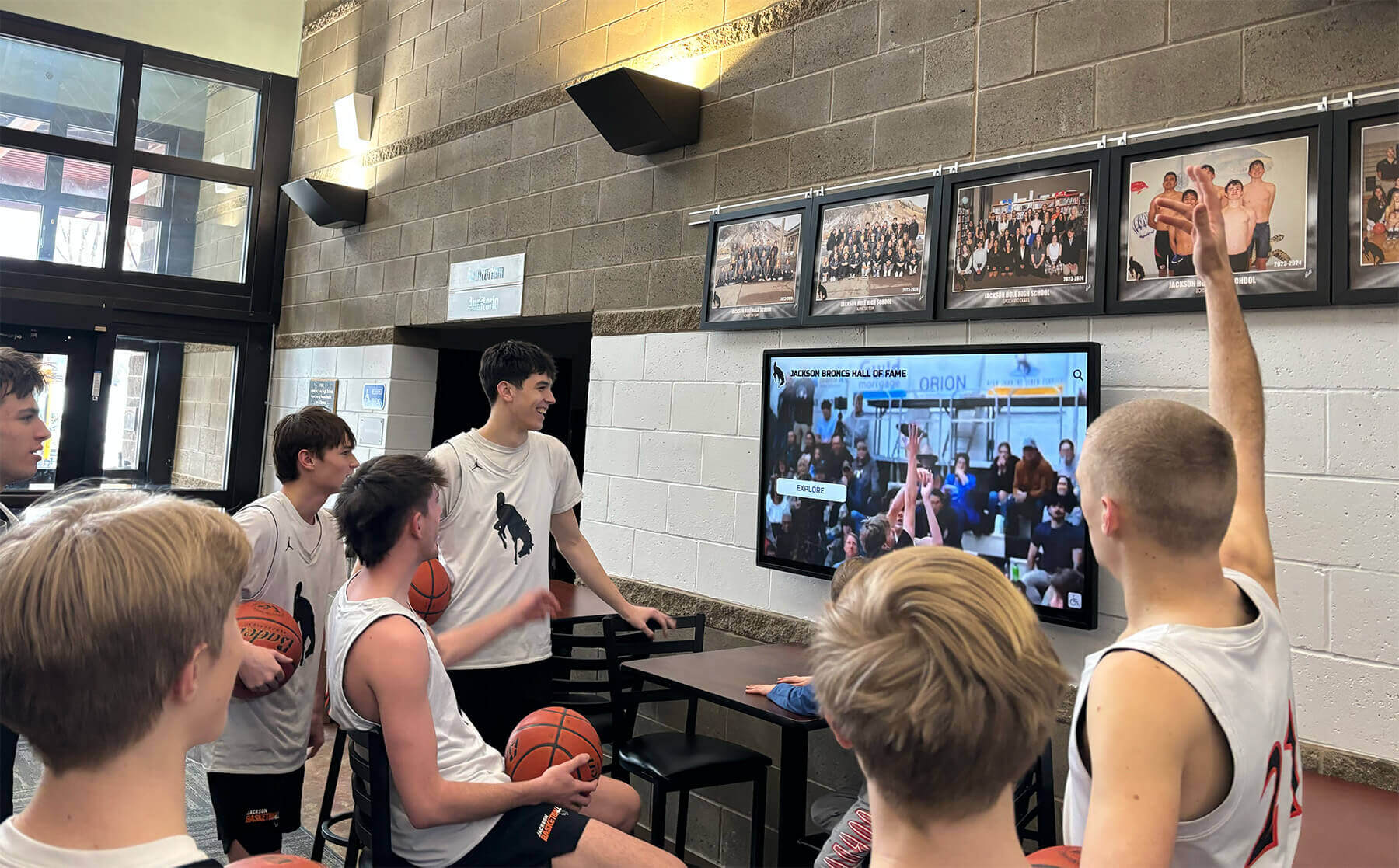
Incorporating Digital Displays into Ceremonies
Digital recognition displays can enhance signing ceremonies in several ways:
Schools can display athlete profiles on screens during ceremonies, provide interactive displays where guests explore commitments, create digital photo backdrops incorporating commitment information, live-update digital displays as athletes are announced, and encourage guests to engage with displays showing program history.
This integration connects momentary ceremony celebration with permanent digital recognition, helping families understand that recognition extends far beyond the single event.
Virtual Participation Options
Not all families can attend in-person ceremonies due to work schedules, distance, or other commitments. Consider providing live-streaming of ceremonies with quality audio and video, virtual tours of digital recognition displays, and digital profile links shared via email or social media.
These options ensure all families can participate in celebrations regardless of scheduling or distance limitations, while extending recognition reach beyond those present at physical events.
Building Sustainable College Commitment Recognition Programs
One-time celebrations matter, but systematic recognition programs create lasting value. Schools benefit from establishing clear processes and standards that ensure consistent, high-quality recognition for all commitments.
Establishing Recognition Criteria and Standards
Clear, documented criteria prevent confusion and ensure fairness:
Decisions to Address:
- Which commitment types receive recognition (NCAA D-I/D-II/D-III, NAIA, NJCAA, club sports)
- How walk-on opportunities are handled compared to scholarship offers
- Whether verbal commitments receive recognition before official signing
- How transfers or changed commitments are managed
- What information is required for inclusion
- Photo and video submission standards
- Timeline expectations for submission after commitments
Most schools adopt inclusive approaches recognizing all verified collegiate roster commitments regardless of scholarship status, as walk-on athletes demonstrate exceptional dedication and all participants contribute to program legacy and community pride.
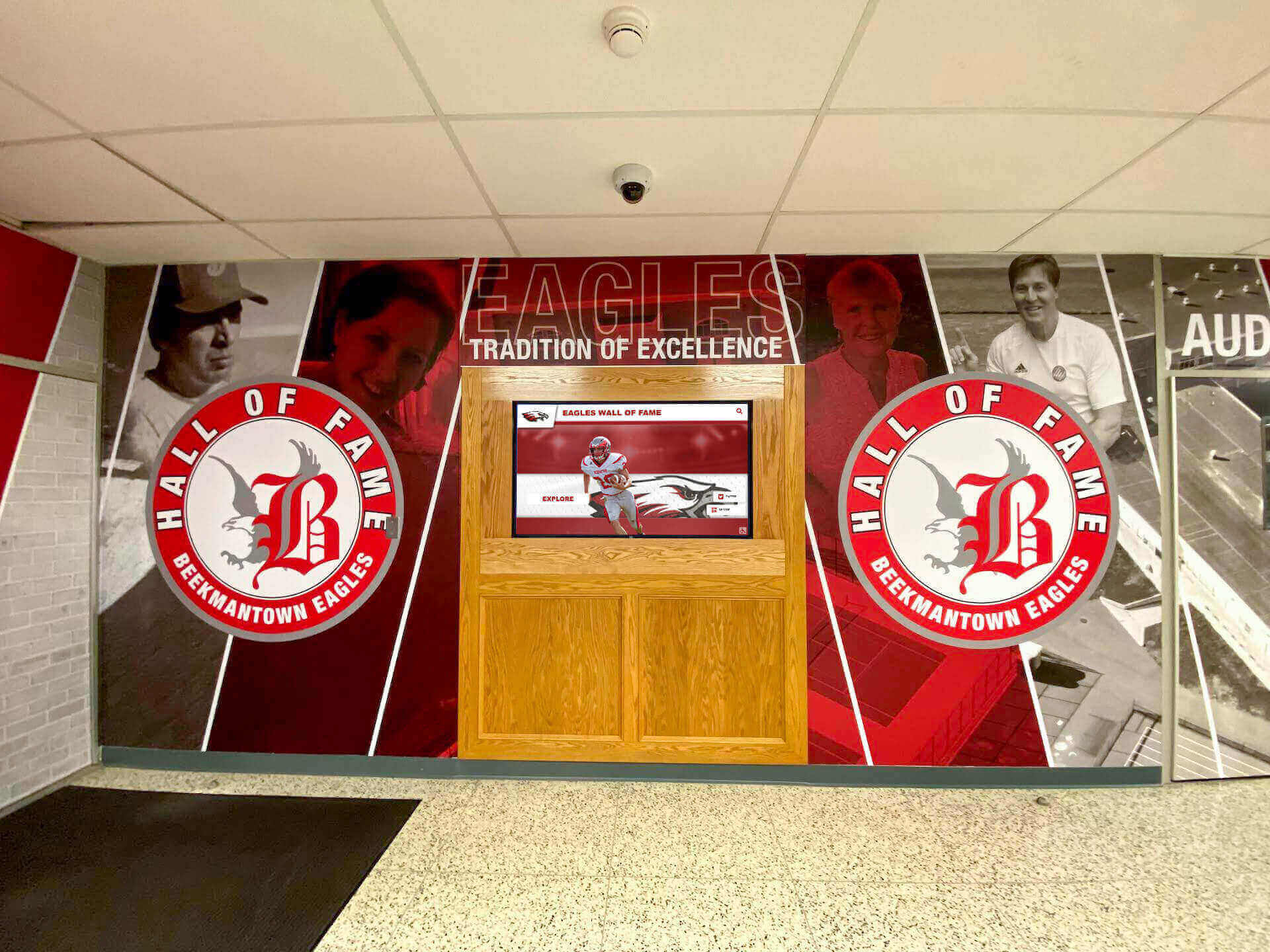
Creating Efficient Information Collection Workflows
Systematic collection processes ensure timely, complete recognition:
Recommended Workflow Steps:
- Athlete or family notifies athletic director of commitment
- Athlete completes digital submission form with all required information
- Athlete submits photos (signing ceremony, action shots, headshots)
- Coach verifies accuracy and provides additional context if needed
- Athletic director reviews submission for completeness
- Content is added to digital display system
- Announcement is made through appropriate communication channels
- Family receives confirmation that recognition is live
Digital submission forms standardize information collection and ensure nothing important is missed. Forms should be simple, clear, and accessible, typically requiring 10-15 minutes to complete.
Assigning Clear Responsibilities
Successful programs designate specific individuals responsible for managing recognition:
Key Roles:
- Athletic Director: Overall program oversight and final approval
- Individual Coaches: Communicating requirements to athletes and families
- Administrative Staff: Form management and content entry (when applicable)
- Communications Staff: Coordinating announcements and media coverage
- IT Support: Technical assistance with digital platforms (when needed)
When everyone understands their responsibilities, recognition happens consistently without confusion or delays. Documentation of processes ensures continuity when staff changes occur.
Maximizing Engagement with College Commitment Recognition
Creating excellent recognition content is only half the equation. Strategic promotion drives the engagement that makes recognition truly impactful.
Launch and Promotion Strategies
When implementing new digital commitment displays or celebrating new commitments, promote extensively:
Effective Promotion Approaches:
- Announcements through school communication channels (newsletters, email, social media)
- Integration into campus tours for prospective families
- Features during athletic events, banquets, and ceremonies
- Direct notifications to committed athletes encouraging them to view and share profiles
- Alumni engagement through reunion communications and alumni association channels
- Media relations with local news outlets covering local athletes’ successes
- Parent organization and booster club communications
The goal is ensuring that target audiences—current students, prospective families, alumni, and community members—know about recognition resources and understand how to access them.

Integration with Athletic Marketing
College commitment recognition supports broader athletic marketing objectives:
Comprehensive commitment displays demonstrate program quality to prospective recruits, provide evidence of college placement success during recruiting conversations, create shareable content for social media marketing, strengthen program reputations within conferences and regions, and support fundraising by demonstrating return on investment in athletic programs.
Athletic directors should view commitment recognition as strategic marketing assets, not just feel-good acknowledgments. The content serves multiple purposes simultaneously when leveraged effectively.
Connecting Current Athletes with Alumni
Digital recognition platforms create natural opportunities to connect current athletes with alumni who preceded them:
Schools can facilitate mentorship relationships between committed seniors and athletes in college, coordinate alumni panels where former athletes discuss college experiences, create networking opportunities connecting athletes with alumni in similar majors, and encourage alumni to share updates and advice through digital platforms.
These connections provide valuable guidance for students navigating college athletics while strengthening overall alumni engagement with athletic programs.
Tracking Collegiate Success and Continued Recognition
Recognition shouldn’t end when students graduate. Following and celebrating collegiate success creates ongoing engagement while providing inspiring examples for current athletes.
Maintaining College Career Updates
Consider updating commitment profiles with collegiate achievement information:
Valuable Update Content:
- Freshman season highlights and statistics
- Conference championships and tournament success
- Individual awards and all-conference honors
- Academic achievements like academic all-conference recognition
- Statistical milestones and program records
- Professional athletic opportunities after college
These updates demonstrate ongoing school pride in former students’ achievements while providing realistic examples of college athletic experiences for current athletes making decisions about their own futures. Digital systems make ongoing updates practical in ways physical displays never could.
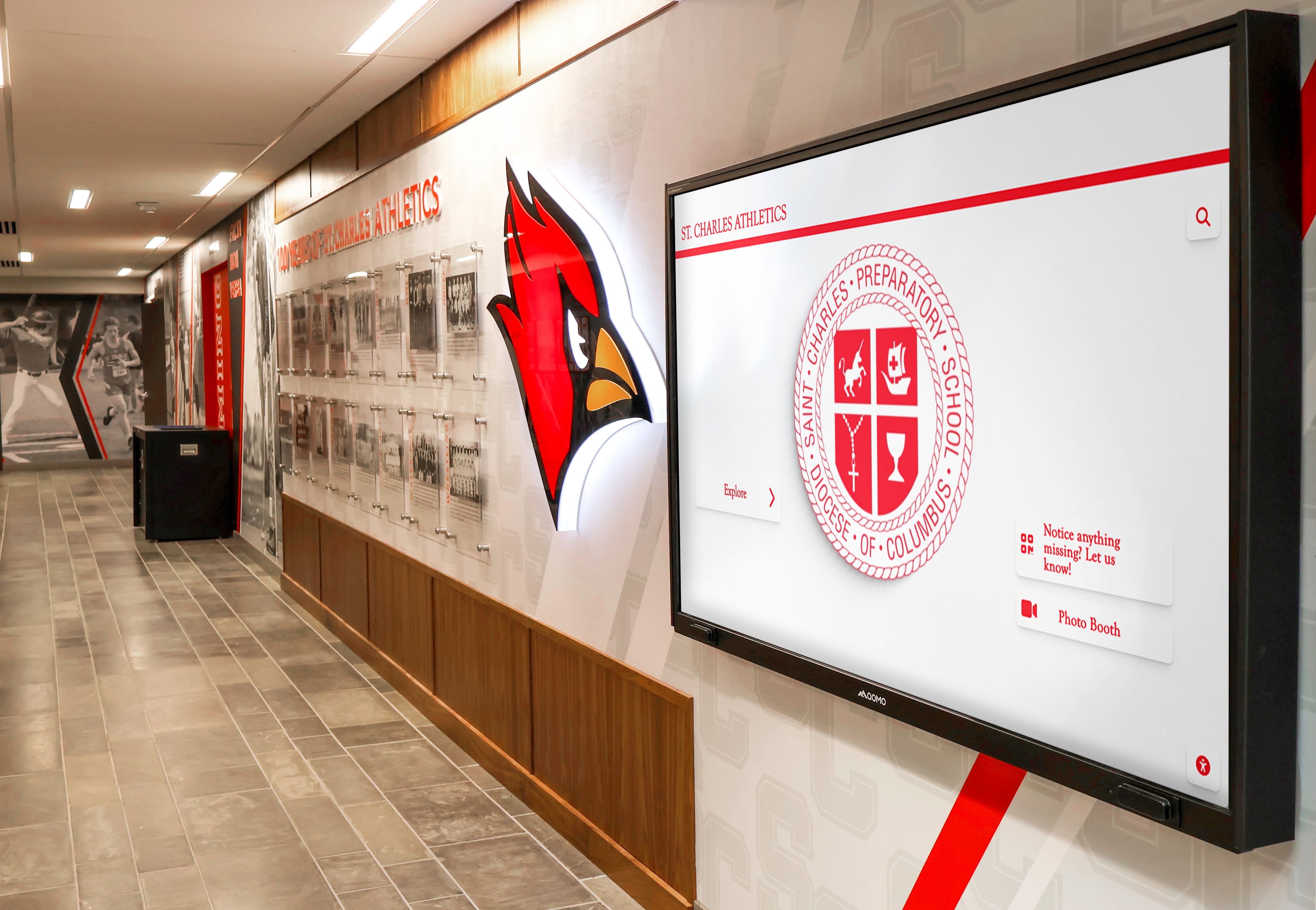
Creating Long-Term Program Success Metrics
Comprehensive commitment databases enable valuable program evaluation over time. Athletic directors and coaches can analyze important patterns including percentage of athletes who successfully complete collegiate athletic careers, which college programs consistently provide good fits, how athletes perform at different competition levels, trends in commitment patterns over years or decades, and relationships between high school achievements and college success.
This analysis informs program development decisions and helps coaches guide current athletes toward appropriate college fits based on historical patterns and outcomes.
Implementation: From Planning to Launch
Schools ready to enhance college commitment recognition should follow systematic implementation approaches ensuring successful outcomes.
Phase 1: Assessment and Planning
Initial Steps:
- Inventory current recognition approaches and identify limitations
- Survey coaches, athletes, and families about recognition preferences
- Research available digital recognition platforms
- Assess budget and identify potential funding sources
- Define specific goals for enhanced recognition program
- Establish success metrics to evaluate program effectiveness
This planning phase typically takes 4-8 weeks and creates foundation for successful implementation.
Phase 2: Platform Selection and Customization
Selection Considerations:
- Ease of content management for non-technical staff
- Multimedia support for photos and videos
- Search and filtering capabilities
- Mobile and web access options
- Customization for school branding
- Technical support and training provided
- Integration with existing systems
- Long-term sustainability and vendor stability
Platforms specifically designed for educational athletic recognition, like those from Rocket Alumni Solutions, provide purpose-built features that generic digital signage systems lack. The investment in specialized platforms pays dividends in ease of use and functionality aligned with school needs.

Phase 3: Content Development
Building Initial Content:
- Document recent commitments (past 2-3 years as starting point)
- Collect photos from yearbooks, social media, and families
- Gather statistics and achievement information
- Write athlete biographies and profiles
- Organize content in logical categories
- Test functionality and user experience
- Plan phased historical content addition
Quality initial content creates strong first impressions and demonstrates program value immediately rather than launching with minimal content that grows over time.
Phase 4: Launch and Promotion
Launch Strategies:
- Time launch with significant athletic event or ceremony
- Create formal unveiling ceremony acknowledging new recognition approach
- Promote extensively through all communication channels
- Demonstrate features to key stakeholders
- Gather initial feedback and make refinements
- Celebrate the recognition program itself to build awareness
Successful launches generate excitement that drives initial engagement and establishes displays as valued school resources.
Phase 5: Ongoing Management and Enhancement
Sustainability Practices:
- Add new commitments promptly throughout each year
- Maintain consistent information quality standards
- Systematically add historical content filling gaps over time
- Monitor engagement metrics and gather user feedback
- Continuously improve content based on learning
- Celebrate program milestones (100th athlete recognized, etc.)
The most successful recognition programs treat implementation as beginning rather than completion, with continuous enhancement creating increasing value over years.
Overcoming Common Implementation Challenges
Schools implementing enhanced college commitment recognition typically encounter predictable obstacles. Awareness of common challenges enables proactive solutions.
Budget Constraints
Digital recognition systems require financial investment. Solutions include phased implementation starting with core features, pursuing funding from booster clubs or parent organizations, seeking sponsorships from local businesses, applying for education technology grants, or calculating long-term ROI showing value justifies investment.
Many schools find that highlighting recognition programs during fundraising generates enthusiastic donor response, particularly from alumni athletes who appreciate permanent celebration of these important milestones.
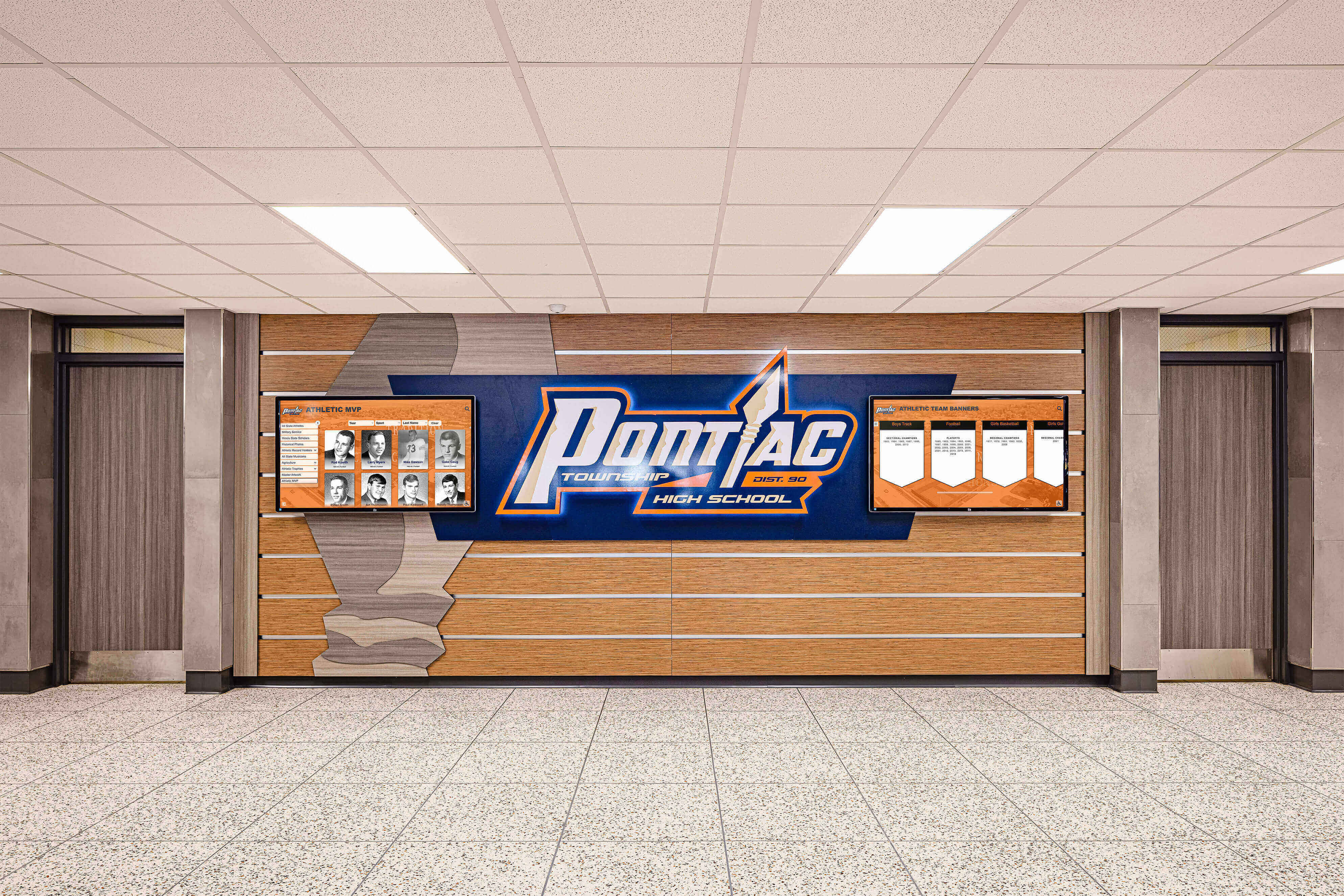
Information Collection Consistency
Ensuring complete information for all commitments requires systematic approaches:
Consistency Solutions:
- Clear submission deadlines and transparent processes
- Designated individuals with explicit responsibility
- Simple, user-friendly submission forms
- Systematic follow-up when information is missing
- Beginning-of-season reminders about recognition participation
- Celebrating the recognition program itself to encourage participation
Consistency improves naturally as programs become established traditions and athletes expect participation as part of commitment celebrations.
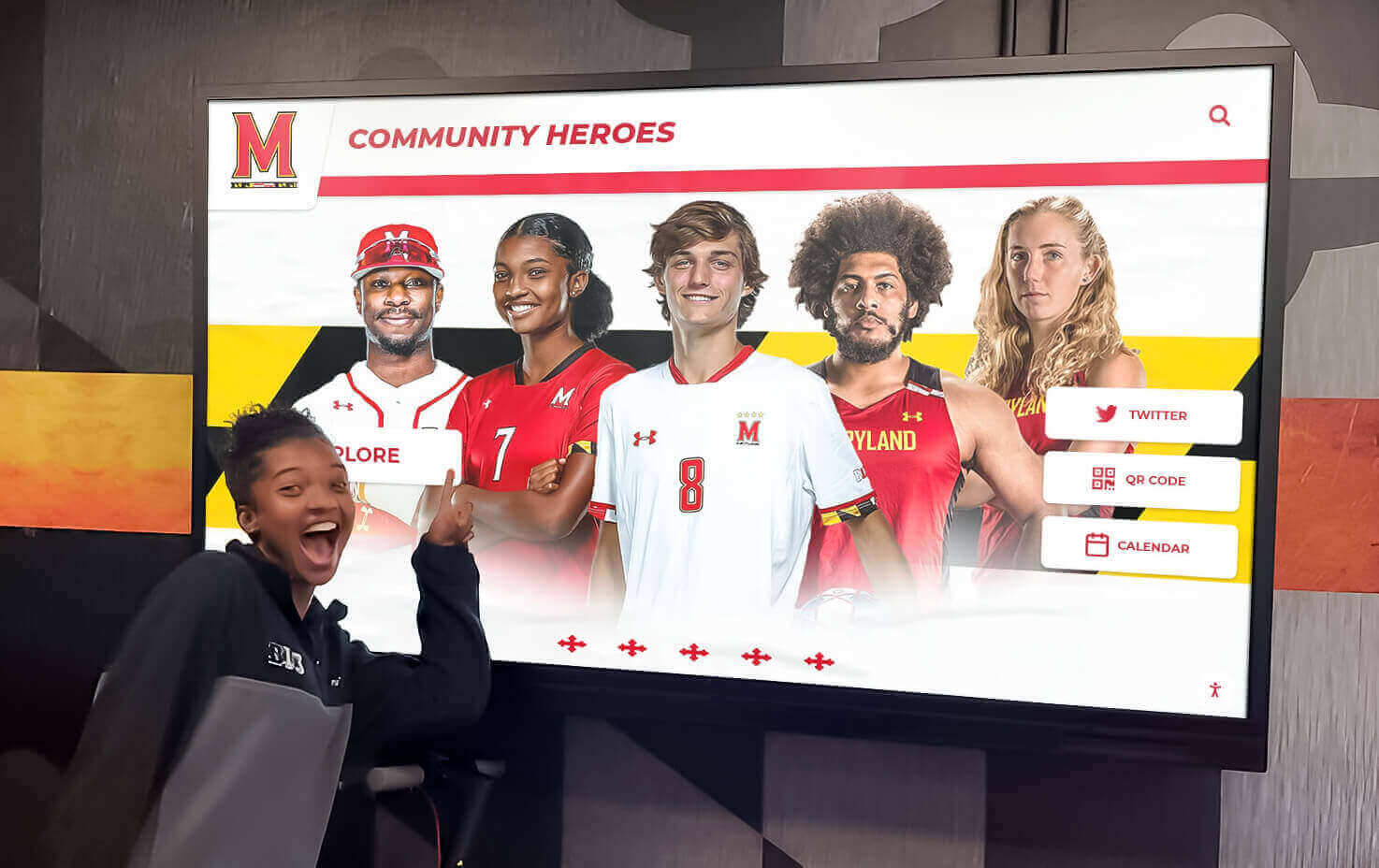
Technical Expertise Limitations
Not all schools employ staff with extensive technology experience:
Addressing Technical Challenges:
- Select platforms specifically designed for non-technical users
- Partner with vendors providing comprehensive training and support
- Engage tech-savvy parents or alumni as volunteers when appropriate
- Start with basic features before adopting advanced capabilities
- Document procedures so knowledge doesn’t depend on specific individuals
Purpose-built recognition platforms require minimal technical expertise compared to custom-built solutions or adapted generic systems.
Maintaining Long-Term Momentum
Initial enthusiasm sometimes fades after implementation:
Momentum Maintenance:
- Build update workflows into existing processes and responsibilities
- Regularly celebrate the recognition program itself
- Review engagement metrics demonstrating ongoing value
- Refresh featured content periodically
- Include recognition responsibilities in relevant staff job descriptions
- Connect recognition program to strategic athletic department goals
The most successful programs treat commitment recognition as ongoing initiatives requiring sustained attention rather than one-time projects completed at launch.
Connecting College Commitments to Broader Recognition
College commitments represent one aspect of athletic excellence worth celebrating. The most effective recognition programs integrate commitments with other achievement dimensions.
Integration with Comprehensive Athletic Recognition
Consider connecting commitment profiles with season highlights and championship celebrations, individual records and statistical achievements, team rosters with current athletes, coach profiles and program history, and facility development documenting program growth.
This integration creates complete athletic recognition systems where visitors explore multiple dimensions of program excellence through intuitive navigation and related content suggestions.
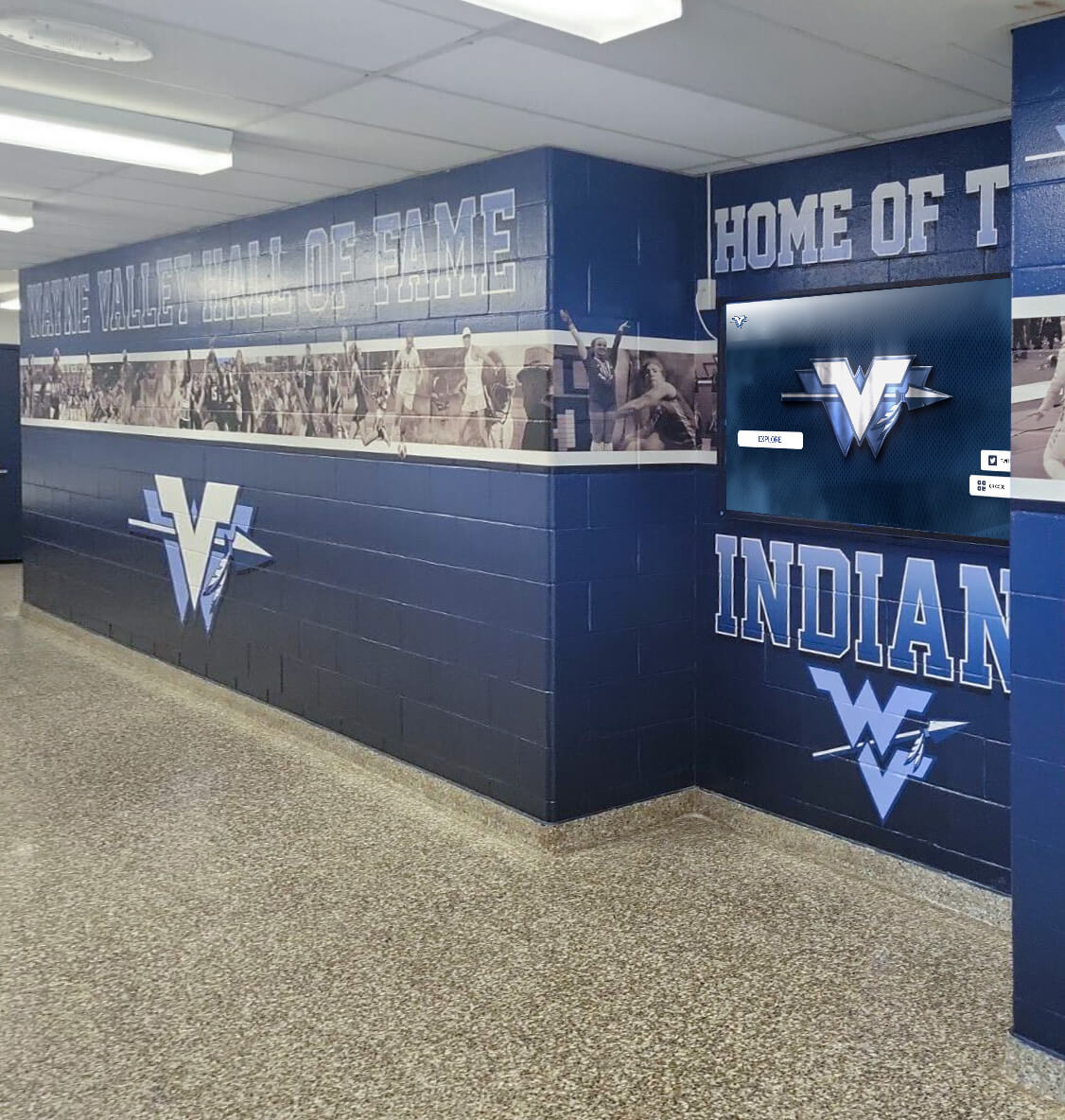
Hall of Fame Pathways
As athletes’ careers progress and post-graduation achievements accumulate, some eventually earn hall of fame recognition. Digital systems supporting both college commitment celebration and comprehensive hall of fame displays can maintain continuous recognition that evolves throughout athletes’ lives.
This long-term perspective demonstrates enduring appreciation and maintains engagement with alumni throughout careers spanning decades beyond graduation. Schools implementing recognition solutions should consider how commitment celebration integrates with potential future hall of fame honors.
The Future of College Commitment Recognition
Technology continues evolving, creating new opportunities for enhancing recognition in coming years.
Emerging Capabilities
Future recognition systems may incorporate artificial intelligence for automated highlight reel creation, enhanced social integration allowing seamless sharing and collaborative features, virtual reality experiences providing immersive storytelling, and predictive analytics helping athletes understand potential pathways.
Schools investing in modern digital recognition platforms now position themselves to adopt emerging capabilities as they become available without requiring complete system replacements.
Evolving Best Practices
As more schools implement comprehensive digital commitment recognition, collective best practices continue developing. Schools should stay connected with athletic director networks, participate in relevant conferences and professional development, monitor recognition program innovations, and gather feedback from students, families, and communities.
The field of athletic recognition continues maturing, with early adopters sharing lessons that benefit entire educational communities.
Conclusion: Recognition That Inspires Excellence
College athletic commitments represent extraordinary achievements deserving recognition extending far beyond single signing day ceremonies. When schools celebrate these commitments comprehensively and permanently, they honor student-athletes appropriately while inspiring future generations, demonstrating program quality, and creating lasting connections throughout school communities.
Digital recognition platforms make comprehensive celebration practical and sustainable. They eliminate space constraints of traditional displays, provide multimedia storytelling impossible with physical boards, support efficient management by busy athletic staff, create searchable historical records preserving institutional success, and extend access far beyond physical campus locations.
Most importantly, effective college commitment recognition communicates clear messages to everyone who interacts with it: this school values achievement, this program develops collegiate-level talent, these athletes’ journeys matter and deserve celebration, and excellence receives lasting recognition that endures for years and decades.
When schools implement thoughtful recognition programs, they build cultures that naturally increase school pride and strengthen community bonds across generations.
Ready to transform how your school celebrates college athletic commitments? Discover how digital recognition solutions like those offered through Rocket Alumni Solutions create engaging, permanent recognition that inspires your entire athletic community. Explore comprehensive approaches to athletic recognition including showcasing college commitments with digital displays and learn how thoughtful recognition programs increase school pride while celebrating achievement and building lasting community connections.



































